
Learn how to transform your early talent recruiting program into a must-have strategic partner that delivers high-impact results. (Members Only.)

The small employer winner of the 2025 NACE Recruiting Excellence Award, heritage Moss Adams’ (now Baker Tilly) Summer Internship Experience is designed to build a strong pipeline of skilled career professionals who will elevate the profession and the firm.

Third in a series of articles focused on the candidate experience, this article by Mary Scott addresses how execution, authenticity, and the candidate experience shape the employer’s campus brand.

The traditional office visit has evolved into an opportunity for an organization to give job candidates a glimpse into its culture and a vision for the candidates’ career there.

Moving to skills-based hiring opens opportunity for a broader demographic of students to access positions where they otherwise would not meet the qualifications. Many employers include skills development in their internship programs to enhance their interns’ career readiness and bolster conversion.

In the second of a two-part series, 13 NACE leaders offer their insight and guidance about what they have learned in their time in the profession.

To persist toward successful conversion of interns, organizations must not view engagement as a 10-week summer pursuit. Instead, engagement must gain momentum through recruiting and pre-internship, accelerate during the internship itself, and be maintained after interns return to campus.

The goal for employers should be to keep autistic employees from “hire to retire,” which is the ability to sustain these employees by providing them with the support they need to build their career in an organization.

When recruiting and hiring students with autism, it’s important for employers to train hiring managers so they understand how the hiring process might look different and adjust their criteria on how they evaluate candidates.
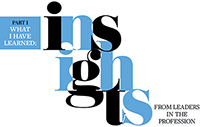
In the first of a two-part series, 13 NACE leaders offer their insight and guidance about what they have learned in their time in the profession.

Hyster-Yale Materials Handling is developing a pre-onboarding program to engage and build excitement among its interns prior to their start date next summer.

Disney provides resources to the College Fund to administer the latter’s scholarship program, called the Future Native Storytellers Program. Recently, a smaller group of program scholars was selected to receive additional enhancements to increase the awareness of opportunities at Disney for Native students.

This past summer, Arup expanded its career readiness programming for summer interns by working with its internal learning and development team to implement a series of competency-focused workshops.

Liberty Mutual has found that one of the most effective ways to maintain or strengthen connections with prior interns when they are on campus is to meet them where they are, such by hosting meetups, dinners, or coffee chats on or near campus.

When done right, execution—meeting or exceeding students’ expectations throughout their candidate experience—helps drive success in early talent recruiting.

Global Atlantic Financial Group, the small employer winner of the 2024 NACE Recruiting Excellence Award, addressed a pressing need for increased diversity and innovation and a robust talent pipeline.

The employer winner of the 2024 NACE Technology Excellence Award, Freese and Nichols implemented talent acquisition platform Yello and modified its roles and processes related to its on-campus career fair strategy to significantly increase its university hiring.

Northwestern Mutual shifting the focus of its internship program to development of career readiness competencies seemed like a natural progression since the company was already focusing on themes similar to those identified by NACE’s competencies.

Providing a candidate experience that meets—or better yet, exceeds—students’ expectations is the “secret sauce” that drives successful results.

Recent data reveal that systemic barriers continue to limit progress on achieving pay equity for all—yet there are tangible, proven ways that career centers and employers can make an impact.

Consultant Katie Donovan offers tips for employers to eliminate the main causes of pay inequity for women, including that women are underpaid doing the same jobs as men and are underrepresented in leadership roles.

To foster a truly diverse and inclusive workplace, employers should expand their DEI efforts to encompass what is increasingly being referred to as DEIA—or diversity, equity, inclusion, and accessibility.
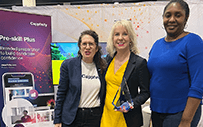
In 2022, Cappfinity partnered with EY’s UK student recruitment team to deliver an immersive, inclusive, and differentiated approach to early careers recruiting, creating VR for intern attraction and development.

Many URR and career services functions are using artificial intelligence (AI) to streamline their processes and enhance their operations. However, there are potential legal risks adopters should consider as they move from dipping their toes into the AI pool to fully diving in.

Some of the rewarding aspects of being a URR professional include changing people’s lives and providing a seat at the table for many who may not have been historically represented.

Mohawk Industries believes it has a responsibility to do what it can to support the transition of students to the workplace, which is just one of the reasons its ASPIRE program is so important.

In a unique interview with ChatGPT, NACE asks the AI language model how it feels about its use as a tool in the job search, career readiness, and talent acquisition; the ethics of its use; and more.

Among the key information recruiters need to know to successfully navigate their careers is to stay informed and value relationships.
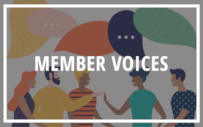
Over the summer, NACE conducted a Quick Poll to learn about fall recruiting plans, and the findings seemed to indicate that most activities would mostly return to in-person. Employers expected to spend about 70% of their time recruiting in person and 80% of career centers were planning for in-person career fairs. However, even with a return to in-person events, both employers and colleges still had to adjust their standard procedures because of the ongoing risk posed by the pandemic.

When employers consider skills and practice skills-based hiring and skills-based networking, they bring in a more diverse slate of candidates from non-traditional backgrounds, says Asha Aravindakshan.

College graduates in their early professional careers report significant mental health issues and view their jobs as a contributing factor. How can employers and colleges provide support?

The M&T Bank talent acquisition unit’s partnerships with employee resource groups (ERGs) has yielded a range of benefits, such as helping to identify internal talent, providing training opportunities, improving engagement across the organization, and boosting retention.

The employers that could best weather the coronavirus pandemic in terms of their college recruiting programs will find ways to adapt to current conditions and still deliver on the aspects of their programs that are most important to college students.

An employer looking to set up a “campus champion” program as an element in its campus recruiting efforts turned to colleagues in the NACE Community for ideas on staffing, the responsibilities and expectations of the program, and the guidelines for campus engagement.

Two critical factors for limiting bias in AI systems are building diverse AI teams and implementing an enterprise-wide trustworthy AI framework.

NACE Community members share ideas for keeping interns who have accepted their job offers interested and excited until the first day of employment.

What, if anything, do you give your interns to welcome them to their internship or help them remember their intern experience?

How long do employers give interns to decide whether to accept an offer of a full-time position? Employers want to give soon-to-be graduates plenty of time to make their decision.

Eight best practices provide a foundation for organizations that are focused on recruiting and hiring new college graduates.

When it comes to developing URR strategy, Mark Woodrum, university recruiting leader for Cloudera, encourages organizations to drill deeper than general data.

Onboarding isn’t about completing paperwork or a checklist. It is a six- to 12-month process that integrates new hires into the organization in a way that is designed to decrease turnover by increasing engagement.

This sample onboarding plan lays out activities and processes for helping new hires assimilate successfully over the course of their first year on the job.

INROADS has co-developed a program to help organizations recruit students at a greater number of HBCUs across the United States for paid internships.

Following the Great Recession a little more than a decade ago, many organizations learned a costly, yet valuable, lesson.

Companies that currently do not have jobs or internships should try to provide students with learning engagement support or development, and strive to make connections with them.

Swinburne University created the AccessAbility Careers Hub, which provides targeted career education for students with disabilities.

For talent acquisition, given its emerging technology-intensive ecosystem, is what role does human interaction appropriately play? Where is the humanity in the technology of talent acquisition?


Does your organization run a background check immediately after making an offer or closer to the new hire’s start date? URR professionals in the NACE Community share their approaches.

Research conducted by Mary Scott reveals that students are far more likely to use laptops than smartphones to complete key tasks throughout the recruiting process.
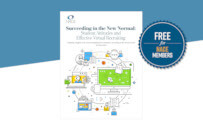
This NEW publication from NACE, Succeeding in the New Normal: Student Attitudes and Effective Virtual Recruiting, provides recommendations and insights, based on research and qualitative interviews with students, for effective virtual recruiting strategies and practices. Download your FREE copy today.

Long-promoted as a viable replacement for employers’ physical presence on campus, virtual career fairs had not gained significant traction prior to COVID-19.

While DREAMers tend to have qualities employers seek, there are several obstacles they face that career services professionals can help them navigate during the job search.

There is a trend toward an erosion in salary differentials among the degree levels, according to results of NACE’s Class of 2019 First-Destination Survey.

Students consider personal social media to be undesirable as a recruitment channel, whereas they view LinkedIn as professional online networking.

Career services can play a vital role in helping student veterans realize their goal of meaningful employment after graduation.
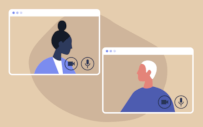
Can building authentic relationships—the very essence of effective recruiting—be replicated digitally? There are steps employers can take to personalize the student experience.

It is important for employers to consider the language they use because language can be loaded and have different meanings for different people.

Instead of pausing its college recruiting operations during the pandemic, NCR shifted its focus from on-campus to on-screen engagement, while always putting the students first.

As NI went through increasingly rapid changes due to shifts in the market, it became clear that significant adjustments were needed to its programs and strategies.

The State of Georgia’s reverse networking fair offered state agencies the opportunity to promote their career opportunities for college students to career services professionals.

It is difficult for students to be or perform their best when they are concerned about the reliability of their internet access and technology.

The concept of recognizing feelings as real is a key step in developing emotional intelligence. The risk you run by not doing so is burnout.

One of the barriers that prevents more employers from partnering with community colleges is a general lack of understanding about what these schools and their students can provide.